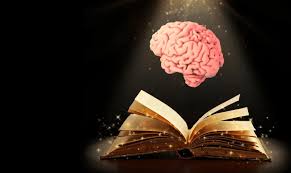Introduction
Engaging history teaching methods can often feel like a daunting task, especially when students seem disengaged or uninterested. But what if we could breathe new life into historical events, making them as captivating as the latest blockbuster? The secret lies in innovative teaching methods that not only inform but also engage and inspire. In this article, we will explore various strategies to make history lessons exciting and memorable, transforming the way students perceive the past.
The Power of Storytelling

Bringing History to Life
One of the most effective ways to engage students is through storytelling. Rather than presenting history as a series of dry facts and dates, transform it into a narrative filled with intriguing characters, dramatic events, and compelling conflicts. Stories capture the imagination and make historical events relatable and vivid.
Using Anecdotes
Incorporate anecdotes and personal stories to humanize historical figures. For example, sharing lesser-known facts about George Washington’s leadership or Cleopatra’s political savvy can make these figures more relatable and intriguing to students.
Interactive Simulations and Role-Playing

Step into History
Interactive simulations and role-playing activities allow students to experience history firsthand. By taking on the roles of historical figures or participants in key events, students gain a deeper understanding of the complexities and emotions involved.
Designing Simulations
Design simulations that recreate historical events such as debates, trials, or diplomatic negotiations. For instance, a mock trial of Galileo or a reenactment of the Congress of Vienna can help students grasp the intricacies of these events.
Incorporating Technology
Digital History Projects
Leverage technology to create engaging digital history projects. Students can use multimedia tools to create timelines, documentaries, podcasts, or digital archives. These projects not only enhance digital literacy but also encourage creativity and collaboration.
Virtual Reality Experiences
Virtual reality (VR) can transport students to different historical eras and locations, providing an immersive learning experience. Imagine taking a virtual tour of ancient Rome or experiencing the trenches of World War I. VR can make history lessons unforgettable.
Connecting History to Current Events
Drawing Parallels
Help students understand the relevance of history by drawing parallels to current events. Discuss how historical events have shaped contemporary society and explore recurring themes and patterns. This approach fosters critical thinking and helps students appreciate the impact of history on the present.
Case Studies
Use case studies to analyze historical events and their modern-day implications. For example, examining the Civil Rights Movement alongside current social justice movements can provide valuable insights into the ongoing struggle for equality.
Hands-On Learning and Field Trips
Experiential Learning
Hands-on learning activities, such as artifact analysis, archaeological digs, or crafting historical tools, make history tangible and engaging. These activities appeal to kinesthetic learners and provide a break from traditional classroom methods.
Educational Field Trips
Organize field trips to museums, historical sites, or cultural landmarks. These excursions offer students a chance to explore history in a real-world context, deepening their understanding and appreciation of the subject.
Also Read The Unbelievable Science of Laughter: Why We LOL and How It Benefits Us
Creative Assignments and Assessments
Alternative Assessments
Move beyond traditional tests and essays by incorporating creative assignments such as dioramas, historical fiction writing, or multimedia presentations. These assessments allow students to demonstrate their understanding in diverse and imaginative ways.
Project-Based Learning
Implement project-based learning (PBL) to encourage in-depth exploration of historical topics. For example, students can work on a project to recreate a historical event, design a museum exhibit, or produce a documentary, fostering both critical thinking and collaboration.
Gamification of History
Learning Through Play
Gamification involves using game design elements to enhance learning. Create history-themed games, quizzes, and challenges to make learning fun and interactive. Gamification can increase student motivation and engagement.
Designing Educational Games
Design educational games that cover key historical events and concepts. For example, a board game that simulates the spread of empires or an online trivia game focused on historical facts can make learning both enjoyable and educational.
Guest Speakers and Expert Panels
Bringing Experts to the Classroom
Invite guest speakers, such as historians, archaeologists, or authors, to share their expertise and insights with students. These interactions can provide fresh perspectives and inspire students to delve deeper into historical topics.
Expert Panels
Organize expert panels on specific historical themes or events. Panels can offer diverse viewpoints and foster engaging discussions, allowing students to ask questions and engage with experts in the field.
Using Visual Aids and Multimedia
Enhancing Lessons with Visuals
Incorporate visual aids such as maps, charts, infographics, and historical photographs to enhance lessons. Visuals can help students better understand complex concepts and retain information.
Multimedia Presentations
Use multimedia presentations, including videos, animations, and interactive timelines, to make history lessons more dynamic. Multimedia resources can bring historical events to life and cater to different learning styles.
Encouraging Critical Thinking
Analyzing Primary Sources
Encourage students to analyze primary sources, such as letters, diaries, speeches, and official documents. This practice helps students develop critical thinking skills and understand history from multiple perspectives.
Debating Historical Interpretations
Organize debates on historical interpretations and controversies. Debating different viewpoints encourages students to think critically, articulate their arguments, and engage in respectful discourse.
Storyboarding and Visual Storytelling
Visual Narratives
Storyboarding is a technique used to plan visual narratives. Have students create storyboards to depict historical events, illustrating key moments and transitions. This method helps students organize information and think creatively.
Historical Comics and Graphic Novels
Encourage students to create historical comics or graphic novels. This creative approach combines visual art with storytelling, making history accessible and engaging for visual learners.
Integrating Literature and History
Historical Fiction
Incorporate historical fiction into the curriculum to bring historical periods to life. Novels, short stories, and plays set in different eras can provide context and spark students’ interest in history.
Literature Circles
Organize literature circles where students read and discuss historical fiction or non-fiction books related to the curriculum. These discussions can deepen understanding and encourage critical analysis.
Creating a Collaborative Learning Environment
Group Projects
Encourage collaboration through group projects. Assign students to work together on research projects, presentations, or creative assignments. Collaborative learning fosters teamwork and allows students to learn from one another.
Peer Teaching
Implement peer teaching activities where students present historical topics to their classmates. This approach empowers students to take ownership of their learning and develop communication skills.
Personalizing History Lessons
Connecting to Students’ Lives
Find ways to connect historical content to students’ lives and experiences. Discuss how their cultural backgrounds, family histories, or local communities are linked to broader historical events.
Individualized Learning Paths
Offer individualized learning paths that cater to students’ interests and learning styles. Allowing students to choose topics or projects that resonate with them can increase engagement and motivation.
Fostering a Growth Mindset
Embracing Challenges
Encourage students to embrace challenges and view mistakes as learning opportunities. A growth mindset fosters resilience and a positive attitude toward learning.
Celebrating Progress
Celebrate students’ progress and achievements, both big and small. Recognizing their efforts and improvements can boost confidence and motivation.
Conclusion
Teaching history doesn’t have to be a mundane recitation of facts and dates. By employing innovative and engaging methods, educators can transform history lessons into captivating journeys through time. From storytelling and simulations to technology and creative assessments, the possibilities are endless. By making history relevant, interactive, and personal, we can inspire students to become passionate historians and critical thinkers.
FAQs
1. How can storytelling enhance history lessons?
Storytelling can make history more engaging by turning facts and dates into compelling narratives. It helps students connect with historical figures and events on a personal level.
2. What are some effective ways to incorporate technology in history teaching?
Effective ways to incorporate technology include digital history projects, virtual reality experiences, and multimedia presentations. These tools can make learning interactive and dynamic.
3. Why is it important to connect history lessons to current events?
Connecting history lessons to current events helps students understand the relevance of history and see its impact on contemporary society. It fosters critical thinking and a deeper appreciation for the subject.
4. How can teachers encourage critical thinking in history students?
Teachers can encourage critical thinking by analyzing primary sources, organizing debates on historical interpretations, and promoting discussions on controversial topics.
5. What are some creative assignments for history students?
Creative assignments for history students include dioramas, historical fiction writing, multimedia presentations, and storyboarding. These assignments allow students to demonstrate their understanding in imaginative ways.


